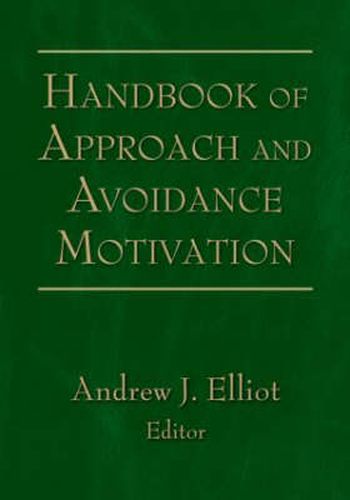Readings Newsletter
Become a Readings Member to make your shopping experience even easier.
Sign in or sign up for free!
You’re not far away from qualifying for FREE standard shipping within Australia
You’ve qualified for FREE standard shipping within Australia
The cart is loading…






Of the many conceptual distinctions present in psychology today, the approach-avoidance distinction stands out as one of, if not the, most fundamental and basic. The distinction between approach and avoidance motivation has a venerable history, not only within but beyond scientific psychology, and the deep utility of this distinction is clearly evident across theoretical traditions, disciplines, and content areas. This volume is designed to illustrate and highlight the central importance of this distinction, to serve as a one-stop resource for scholars working in this area, and to facilitate integration among researchers and theorists with an explicit or implicit interest in approach and avoidance motivation. The main body of this volume is organized according to seven broad sections that represent core areas of interest in the study of approach and avoidance motivation, including neurophysiology and neurobiology, and evaluative processes. Each section contains a minimum of four chapters that cover a specific aspect of approach and avoidance motivation. The broad applicability of the approach-avoidance distinction makes this Handbook an essential resource for researchers, theorists, and students of social psychology and related disciplines.
$9.00 standard shipping within Australia
FREE standard shipping within Australia for orders over $100.00
Express & International shipping calculated at checkout
Of the many conceptual distinctions present in psychology today, the approach-avoidance distinction stands out as one of, if not the, most fundamental and basic. The distinction between approach and avoidance motivation has a venerable history, not only within but beyond scientific psychology, and the deep utility of this distinction is clearly evident across theoretical traditions, disciplines, and content areas. This volume is designed to illustrate and highlight the central importance of this distinction, to serve as a one-stop resource for scholars working in this area, and to facilitate integration among researchers and theorists with an explicit or implicit interest in approach and avoidance motivation. The main body of this volume is organized according to seven broad sections that represent core areas of interest in the study of approach and avoidance motivation, including neurophysiology and neurobiology, and evaluative processes. Each section contains a minimum of four chapters that cover a specific aspect of approach and avoidance motivation. The broad applicability of the approach-avoidance distinction makes this Handbook an essential resource for researchers, theorists, and students of social psychology and related disciplines.